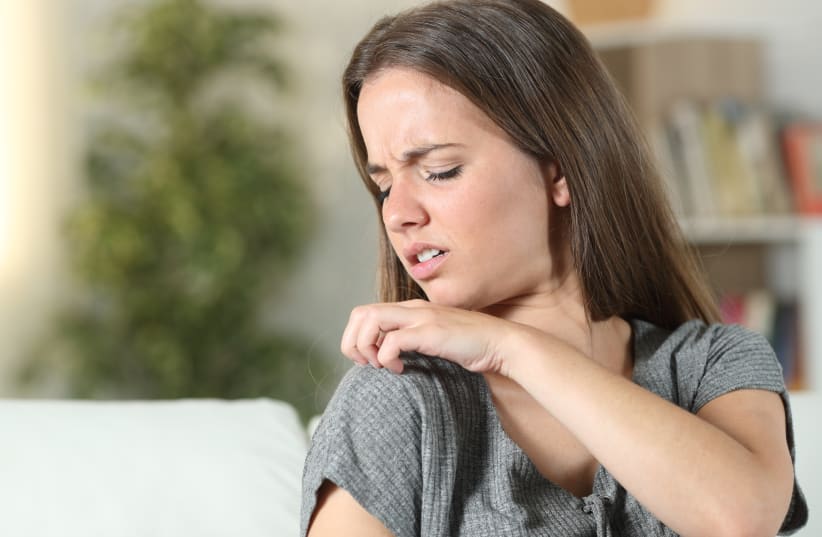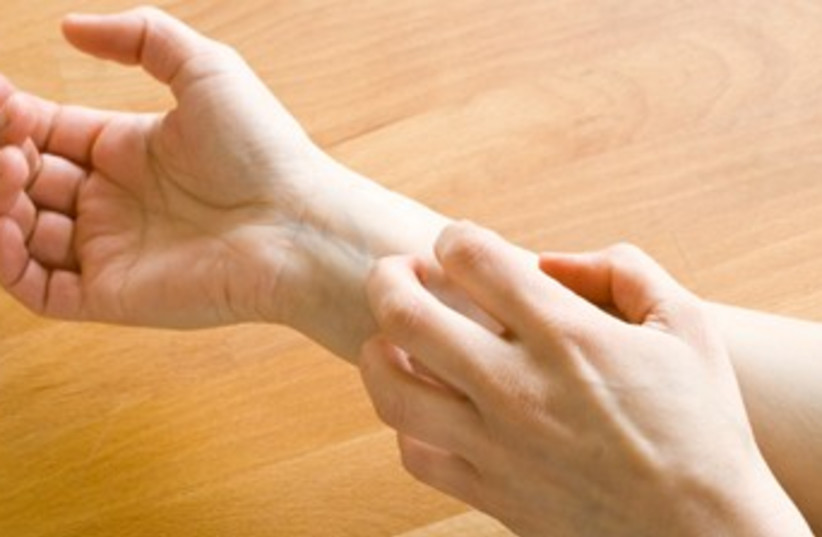Itchiness, or "pruritus" in another language, is defined as an unpleasant feeling that stimulates one's need to scratch.
Chronic itchiness is a daily itching sensation that lasts for more than six weeks. It is a common and very bothersome symptom associated with a number of skin and systemic (meaning impacting the whole body) conditions.
Itchiness is typically associated with a skin disorder like dry skin, dermatitis, atopic dermatitis, urticaria, psoriasis and others.
But when a primary skin condition can't be diagnosed as the cause of itchiness, a systemic or neuropathic cause may be behind it.
Certain systemic diseases are known to cause itchiness ranging from a mild annoyance to an intractable and utterly debilitating condition.
Systemic pruritus can be classified into the following categories, based on the underlying cause:
- Pruritus associated with chronic kidney disease
- Pruritus in chronic liver disease
- Pruritus in hematologic diseases
- Endocrine pruritus
- Malignancy-associated pruritus
For people with chronic itching, the suffering never stops. It leads to a lack of sleep, anxiety, problems with attention and sexual performance, all of which contribute to poor quality of life.
In addition, healthcare costs and treatment challenges make chronic itching a major burden on society.
Chronic itching can sometimes be local, meaning focused on specific parts of the body, but usually, it tends to be a general sense of itchiness across the body.
What are the systemic diseases that make us itch?
Pruritus associated with chronic kidney disease
This is a multifaceted issue that was once called uraemic pruritus. However, as our understanding of the conditions advanced, the term "pruritus associated with chronic kidney disease" began to be used to characterize many patients with end-stage renal disease treated with hemodialysis.
Despite over 50 years of research on the subject, pruritus associated with chronic kidney diseases remains underreported and undertreated.
We do know today that the pathophysiological mechanism for itching includes four different factors:
- Accumulation of toxins that aren't properly removed during dialysis: In these patients, the focus should be on optimizing hemodialysis and therefore reducing the accumulation of vitamin A, calcium, magnesium, phosphorus and aluminum.
- Peripheral neuropathy: Neuropathic pruritus can happen with abnormal nerve conduction and skin innervation.
- Dysfunctional or dysregulated immune system: Here, the explanation is that micro-inflammations in the skin and systemic inflammation can trigger itchiness.
- Dysfunction of the opioid system: This is characterized by an imbalance in certain receptors. The opioid pathway – with receptors located in the brain, peripheral nerves, hair follicles, immune cells, keratinocytes and melanocytes – is an important part of the itchiness.
In order to finally scratch away this annoying itching problem, we need to find out and diagnose the factor behind it in each and every patient.
Pruritus in chronic liver disease
This is a common symptom in patients with liver disease and cholestasis (a decrease or stoppage in the flow of bile) and occurs in around 20%-25% of patients with jaundice.
Itchiness with liver disease can be very severe, causing a lack of sleep and having a significant negative impact on quality of life.
If it's persistent, it may also be a sign that one needs a liver transplant, even in the absence of liver failure.
Cholestatic itchiness tends to be worse at night and is centered usually on the hands, feet and areas where clothes rub against the skin.
The itchiness is often described as being so intense that it is comparable to "laying on a bed of cacti" and "pins and needles." Further, unlike other kinds of itchiness, scratching the itches doesn't provide any relief here.
There are a few different theories behind the mechanism for cholestatic itchiness. For one thing, cholestasis leads to toxins being released from the liver, which subsequently causes itchiness. This stimulates the nerve fibers in the skin, which transmits stimulus to the spinal cord and from there, the brain. More recent research has noted the role of Mu- and Kappa-opioid receptors, which can act as itchiness modulators in the central nervous system.
Specifically, Mu-opioid receptor agonists are pruritic and Kappa-opioid receptor agonists are antipruritic.
Pruritus in hematologic diseases
Iron deficiency is often thought to be the cause of itchiness, even in the absence of anemia. As such, iron supplements can eliminate these symptoms.
However, itchiness can also occur in patients suffering from hemochromatosis, which is when the blood's iron levels are too high.
Polycythemia vera (PV) is a disease where the bone marrow produces too many red blood cells. Approximately 30%-50% of patients suffer from pruritus.
The sensation and intensity of itchiness tend to worsen after showering at any temperature, drinking alcohol, sweating and a sudden change in temperature.
But itchiness can be reduced through antihistamines, phototherapy and adding baking soda powder to bath water.
Endocrine pruritus
Hyperthyroidism has been associated with pruritus. Excess thyroid hormones can activate inflammatory proteins or reduce the itchiness threshold. In addition, diabetes can also be a possible cause, and metabolic disorders and diabetic neuropathy can contribute to itchiness.
Malignancy-associated pruritus (cancer)
There have been several reports in the past linking itchiness to nearly every single kind of malignancy.
Toxins and the immune system play a role in malignancy-associated pruritus. The treatment consists of surgery to remove the tumor and in other cases, it is usually treated with serotonin reuptake inhibitors, also known as serotonin antagonists.
Around 30% of patience with Hodgkin's lymphoma also experience itchiness.
Itchiness can be an early or existing symptom. The sensation of itchiness improves after radiation treatment or chemotherapy.
Treating this kind of itchiness can be either local, systemic, symptomatic or causal.
In many cases, one should avoid excessive bathing, irritating fabrics, alcohol, hot liquids or foods that cause blood vessel dilation and stress.
For some, antihistamines and/or sedatives could be effective.
Capsaicin, cholestyramine and phototherapy may also be used successfully.
But overall, the most important tool for treating itchiness in systemic diseases is to treat the disease in question.
So when you suffer from severe non-stop itchiness for a period of at least six weeks, you should probably go get checked out to find out what's wrong.

